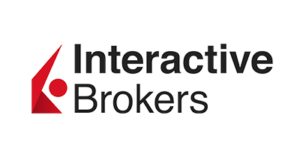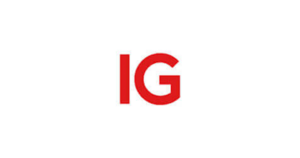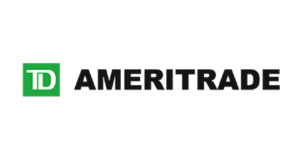 rating 75
rating 75
A
Alerts
An alert in forex trading is a notification or signal that informs traders about potential trading opportunities in the foreign exchange market.
Arbitrage
Arbitrage in forex refers to the practice of taking advantage of price discrepancies in different currency markets to make a profit.
Ask Price
The ask price refers to the price at which a currency pair is offered for sale by a market maker or broker, indicating the amount a trader must pay to buy the base currency.
Asset
An asset in forex refers to a financial instrument or currency pair that can be traded on the foreign exchange market.
At best
‘At best’ in forex refers to the best possible price at which a trader can buy or sell a currency pair at a given time.
AUD
AUD, in forex trading, refers to the Australian Dollar, which is the currency of Australia and is one of the major currencies traded in the global foreign exchange market.
B
Base Currency
The base currency in forex is the first currency listed in a currency pair and acts as the reference point for determining the value of the second currency.
Learn more about ‘Base Currency’
Basis Point
A basis point in forex is a unit of measurement used to represent a percentage change in the value of a currency pair.
Learn more about ‘Basis Point‘
Bear market
A bear market in forex refers to a period of declining prices and pessimistic market sentiment, where the value of currencies consistently decreases against other currencies.
Learn more about ‘Bear Market’
Bid price
The bid price in forex is the price at which a trader is willing to buy a currency pair, representing the maximum price they are willing to pay.
BRL
BRL in forex refers to the currency code for the Brazilian Real, which is the official currency of Brazil.
Broker
A broker is a professional who acts as an intermediary between buyers and sellers in various industries, facilitating transactions and negotiations to ensure the best possible outcome for both parties involved
Bull Market
A bull market in forex refers to a sustained period of rising prices in the foreign exchange market, indicating optimism and investor confidence.
Learn more about ‘Bull Market’
Buy
In forex, ‘buy’ refers to the act of purchasing a currency pair with the expectation that its value will increase, allowing the trader to sell it at a higher price and make a profit.
C
CAD
CAD in forex stands for the Canadian Dollar, which is the currency used in Canada.
CHF
CHF in forex refers to the Swiss Franc, which is the currency used in Switzerland and Liechtenstein.
Close Position
‘Close Position’ in forex refers to the act of liquidating or exiting a trade by selling or buying back the same amount of a currency pair that was initially bought or sold.
Learn more about ‘Close Position’
CFD
CFD in forex stands for Contract for Difference, which is a financial instrument that allows traders to speculate on the price movements of various assets without actually owning the underlying asset.
CNY
CNY in forex refers to the Chinese Yuan, the official currency of China, which is used for trading and investment purposes in the foreign exchange market.
Cost of Carry
The ‘Cost of Carry’ in forex refers to the expenses incurred when holding a currency position overnight, including interest rates, dividends, and other costs.
Counter Currency
Counter currency refers to the currency that is quoted second in a currency pair. In forex trading, it represents the value of the currency being exchanged against the base currency.
Learn more about ‘Counter Currency’
Currency
A currency in forex trading is a specific type of currency that is bought and sold on the foreign exchange market with the aim of making a profit from fluctuations in its value.
Currency Appreciation
Currency appreciation refers to an increase in the value of a country’s currency relative to other currencies in the foreign exchange market.
Learn more about ‘Currency Appreciation’
Currency Depreciation
Currency depreciation refers to the decrease in the value of a currency relative to other currencies in the foreign exchange market.
Learn more about ‘Currency Depreciation’
Currency Symbols
A currency symbol in forex represents a specific currency and is used to denote the exchange rate between two currencies in a currency pair.
D
Day Trading
Day trading in forex refers to the practice of buying and selling currency pairs within the same trading day to take advantage of short-term price fluctuations and profit from the market volatility.
Derivate
A derivative in forex refers to a financial contract whose value is derived from the underlying currency exchange rate.
E
EUR
EUR in forex refers to the Euro, which is the currency used by the European Union.
Exchange
An exchange in forex refers to the process of buying one currency and selling another currency simultaneously in the foreign exchange market.
Execution
An execution in forex trading refers to the process of placing and completing a trade order, which involves buying or selling a currency pair at a specific price and time.
F
Federal Reserve
The Federal Reserve refers to the central bank of the United States, responsible for implementing monetary policy and regulating the country’s financial system.
Learn more about ‘Federal Reserve’
Fiat Currency
A fiat currency in forex refers to a government-issued currency that is not backed by a physical commodity like gold or silver, but rather by the trust and confidence of the people using it as a medium of exchange.
Learn more about ‘Fiat Currency’
Financial Instrument
A financial instrument in forex refers to any tradable asset or contract that derives its value from currency pairs and is used for speculation or hedging purposes in the foreign exchange market
Learn more about ‘Financial Instrument’
Foreign Exchange
Foreign Exchange in forex refers to the decentralized global market where currencies are bought and sold, allowing individuals, businesses, and financial institutions to trade one currency for another at current exchange rates.
Forex
Forex, short for foreign exchange, is the market where one currency is traded for another.
Forex Broker
A forex broker is a financial institution or an individual that facilitates the buying and selling of foreign currencies in the foreign exchange market.
Learn more about ‘Forex Broker‘
Fundamental Analysis
Fundamental Analysis in forex is the evaluation of economic, political, and social factors that influence currency values to make informed trading decisions.
G
GBP
GBP in forex refers to the British Pound, which is the currency code for the currency of the United Kingdom.
Going long
Going long in forex means buying a currency pair with the expectation that its value will increase over time, allowing the trader to sell it at a higher price and make a profit.
Going short
Going short in forex refers to selling a currency pair with the expectation that its value will decrease, allowing the trader to buy it back at a lower price and profit from the difference.
H
Handle
A handle in forex refers to the whole number portion of a currency pair’s exchange rate.
Hedging
A hedging in forex is a risk management strategy used to protect against potential losses by taking offsetting positions in the market.
HKD
HKD refers to the Hong Kong Dollar, the official currency of Hong Kong, which is commonly traded in the foreign exchange market.
I
Illiquid Market
An illiquid market refers to a situation where there is a lack of readily available buyers and sellers, leading to low trading volumes, wider bid-ask spreads, and increased difficulty in executing trades at desired prices.
Learn more about ‘Illiquid Market’
Index
An index in forex is a statistical measure of the value of a group of currencies relative to a base currency, providing an overall representation of the performance of the forex market.
Inflation
Inflation is the sustained increase in the general price level of goods and services in an economy over a period of time.
INR
INR in forex refers to the Indian Rupee, which is the currency of India and is used for trading in the foreign exchange market.
J
JPY
JPY in forex refers to the Japanese Yen, the official currency of Japan, which is widely traded in the foreign exchange market.
K
KRW
KRW stands for the South Korean Won, which is the official currency of South Korea.
L
Leverage
Leverage in forex refers to the practice of borrowing funds from a broker to amplify the potential returns and losses of a trade, allowing traders to control larger positions with smaller amounts of capital.
Leveraged Products
Leveraged products in forex are financial instruments that allow traders to control larger positions in the market with a smaller initial investment by borrowing funds from the broker.
Learn more about ‘Leveraged Products’
Limit Order
A limit order in forex is an order to buy or sell a currency pair at a specific price or better.
Liquid Market
A liquid market in forex refers to a market with high trading volume and frequent price movements, allowing for easy buying and selling of currencies without significant price impact.
Learn more about ‘Liquid Market’
Long
In forex trading, “long” refers to a position taken by a trader to buy a currency pair in the expectation that its value will increase over time.
Lot
A lot in forex refers to a standardized quantity of a financial instrument that is traded on the foreign exchange market, typically representing 100,000 units of the base currency.
M
Margin Call
A margin call in forex is a demand by a broker for an investor to deposit additional money or securities to cover possible losses when their account’s equity falls below the required margin level.
Learn more about ‘Margin Call’
Margin
A margin refers to the amount of money required to open a leveraged position, representing a fraction of the full value of the trade.
Market Data
Market data in forex refers to real-time and historical information about currency prices, trading volume, and other relevant financial indicators used by traders to analyze the market and make informed trading decisions.
Market Maker
A market maker is a financial institution or individual that quotes both a buy and a sell price in a financial instrument or commodity, hoping to make a profit on the bid-offer spread, by turning a profit on the difference between the buying and selling price.
Learn more about ‘Market Maker’
MetaTrader
MetaTrader is a popular electronic trading platform used by online retail foreign exchange speculative traders.
MXN
MXN refers to the currency code for the Mexican Peso, which is the official currency of Mexico.
N
NZD
The NZD (New Zealand Dollar) is the currency of New Zealand, as well as the Cook Islands, Niue, the Ross Dependency, Tokelau, and the Pitcairn Islands.
O
Offer
An offer in forex refers to the exchange rate at which a market maker is willing to sell a currency pair to a trader.
Open Position
An open position refers to a trade that has been established but not yet closed with an opposing trade.
Learn more about ‘Open Position’
Order
An order in forex is an instruction to buy or sell a currency pair at a specific price, typically given to a broker or trading platform.
OTC
OTC stands for “over-the-counter,” and it refers to the decentralized market where traders conduct direct transactions without the supervision of an exchange.
Overnight Position
An overnight position refers to a trade that remains open and is not closed before the end of the trading day.
P
PIP
PIP stands for “percentage in point” and represents the smallest price movement that a currency exchange rate can make based on market convention.
PIP Value
The pip value refers to the measurement of the change in the exchange rate for a currency pair, typically representing the fourth decimal place, and helps traders calculate the potential profit or loss on a trade.
Portfolio
A portfolio in forex refers to a collection of different foreign exchange investments held by an individual or entity.
Q
Quote Currency
A quote currency is the second currency in a currency pair, used to denote the value of one unit of the base currency.
R
Range
The term “range” refers to the difference between the highest and lowest prices of a currency pair within a specific time period.
Risk Management
Risk management in forex is the process of identifying, analyzing, and addressing the potential risks associated with trading currencies in order to minimize potential losses.
S
SEK
SEK stands for the Swedish Krona, the official currency of Sweden.
SGD
SGD refers to the Singapore Dollar, which is the official currency of Singapore and is often traded in the foreign exchange market.
Short
Short in forex trading refers to the selling of a currency pair with the expectation that its value will decrease, allowing the trader to buy it back at a lower price to make a profit.
Slippage
Slippage in forex trading refers to the difference between the expected price of a trade and the price at which the trade is actually executed.
Spread
The spread in forex refers to the difference between the bid (buy) and ask (sell) prices of a currency pair.
Stop Order
A stop order is an instruction to buy or sell a currency pair once it reaches a specific price, aimed at limiting potential losses or locking in profits.
T
Technical Analysis
Technical analysis is the study of past market data, primarily price and volume, to forecast future price movements and make trading decisions.
Learn more about ‘Technical Analysis’
Trading Plan
A trading plan is a comprehensive strategy outlining a trader’s approach to the market, including entry and exit rules, risk management, and other key elements that guide their trading activities.
Transaction Cost
A transaction cost refers to the expenses incurred when buying or selling a currency pair, including spreads, commissions, and other fees.
U
USD
USD stands for United States Dollar, which is the official currency of the United States of America.
V
VIX
VIX, also known as the CBOE Volatility Index, measures the market’s expectation of future volatility based on options pricing, providing insight into investor sentiment and market risk.
Volatility
Volatility refers to the degree of variation in trading prices over time, indicating the level of risk and uncertainty in the market.




